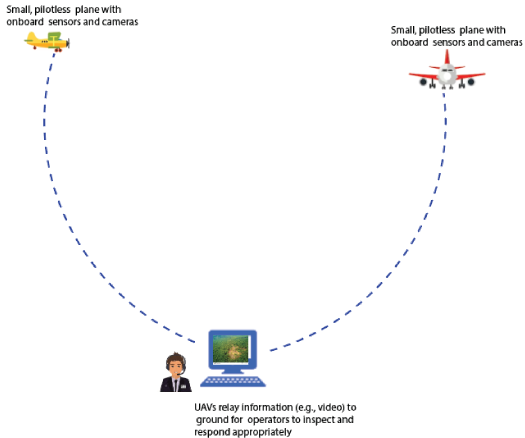Unmanned aerial vehicles (UAVs) and their potential uses in Ghana
Unmanned aerial vehicles (UAVs), or drones, are aircraft without a human pilot on board. They are usually much smaller in size compared with traditional aircraft. UAVs can have varying degrees of autonomy – from remotely controlled to fully autonomous operation.
For a remotely controlled UAV, the operator on the ground pilots the plane by sending commands with the help of special remote control devices. Fully autonomous UAVS can carry out missions without the direct involvement of ground operators. This relies on software installed onboard the UAV in ground control systems, as well as sensors such as GPS systems, cameras and LiDARs. The basic concept of UAV operation is shown in Figure 1.

Figure 1. Basic
UAVs can be used by government agencies such as police and environmental protection agencies to enhance the effectiveness of their work. They can be used in crime fighting and preventive security measures by enabling aerial patrol. This can be used to, for example, monitor and control illegal border crossings, prevent smuggling and human trafficking across borders. Industrial and commercial uses include critical infrastructure monitoring (eg. railway lines, oil & gas pipelines, and electric power lines), precision agriculture, mapping and geolocation, and mineral exploration. The use of UAVs for monitoring and controlling environmentally destructive activities such as illegal mining and fishing activities, poaching and illegal felling of trees is rapidly gaining ground. UAVs are also becoming important in emergency response tasks such as firefighting, search and rescue operations, first responder tasks, among others. In Ghana, UAVs are already being used to deliver critical medical supplies to hospitals in remote places. All these applications require a high level of autonomy.
